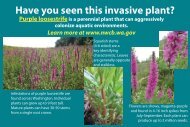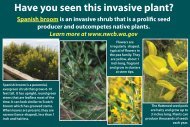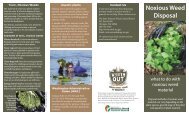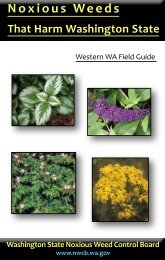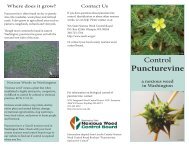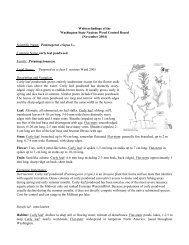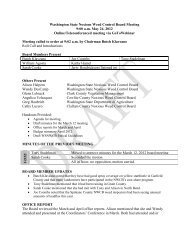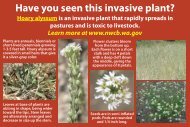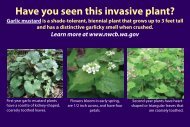Have you seen this invasive plant? - Washington State Noxious ...
Have you seen this invasive plant? - Washington State Noxious ...
Have you seen this invasive plant? - Washington State Noxious ...
- No tags were found...
You also want an ePaper? Increase the reach of your titles
YUMPU automatically turns print PDFs into web optimized ePapers that Google loves.
Why is Mediterranean sage (Salvia aethiopis) a noxious weed?• Mediterranean sage outcompetes beneficial forage<strong>plant</strong>s and is unpalatable to livestock and wildlife.• This biennial or short-lived perennial invades bothdisturbed and undisturbed habitats.Where do <strong>you</strong> find Mediterranean sage?• Well-drained riparian areas, pastures, and rangelandsare the most common habitats to find <strong>this</strong> <strong>plant</strong>.• Mediterranean sage is very limited in distribution andis found primarily in southwestern <strong>Washington</strong>.• Common mullein grows in similar habitats and can beconfused with Mediterranean sage; however, mulleinflowers are yellow, and leaves are not toothed and donot smell like sage.What can <strong>you</strong> do?• Learn to correctly identify <strong>this</strong> Class A noxious weed.• Please note that eradication is required in <strong>Washington</strong>to prevent it from gaining a foothold.• Report any sightings to <strong>you</strong>r county noxious weedcontrol board or to noxiousweeds@agr.wa.gov.Printed 6/2010



